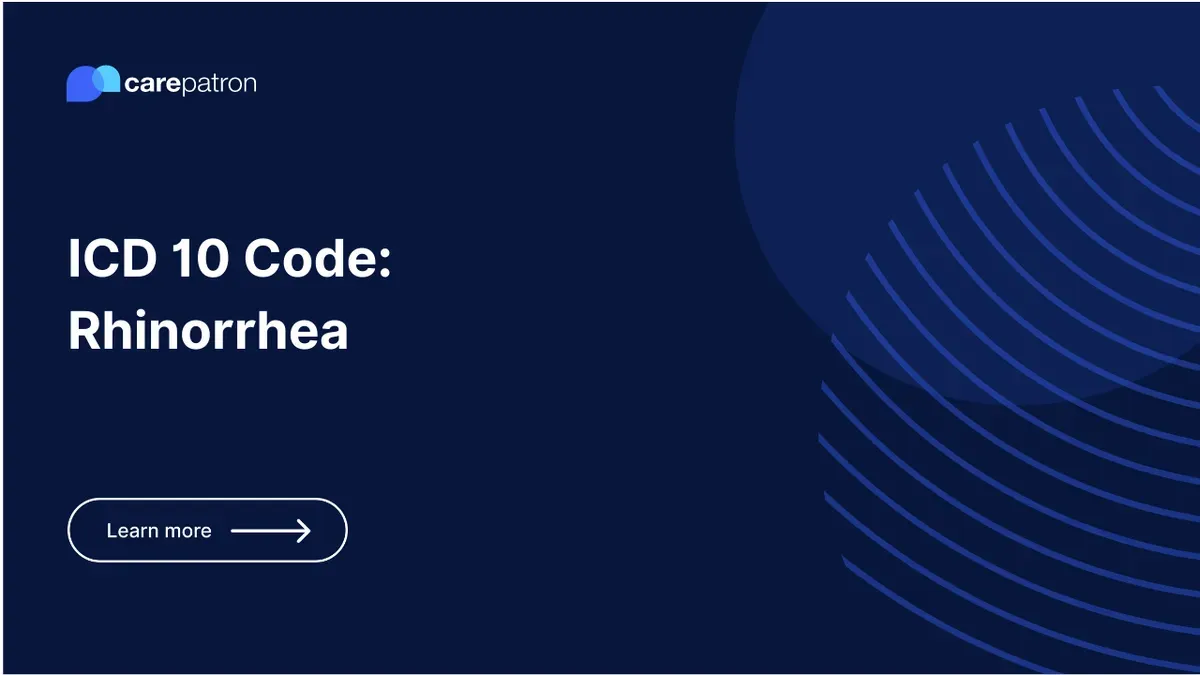
Rhinorrhea ICD-10-CM Codes
Discover the various ICD-10 codes used for Rhinorrhea. Learn about their importance in ensuring accurate diagnosis, treatment, and billing.
Use Code
Commonly asked questions
A Rhinorrhea ICD code is used when a healthcare professional diagnoses a patient with a runny nose condition. This could be due to allergies, a common cold, or chronic rhinitis.
Treatment for rhinorrhea often depends on the underlying cause. This could include antihistamines for allergies, decongestants for a cold, and antibiotics for bacterial infections.
A diagnosis code for Rhinorrhea is a standardized code that healthcare professionals use to classify and record this specific condition in a patient's medical record. They ensure consistency in diagnosis, treatment, and billing processes.
EHR and practice management software
Get started for free
*No credit card required
Free
$0/usd
Unlimited clients
Telehealth
1GB of storage
Client portal text
Automated billing and online payments
